 |
|
| Issue #77 • September/October, 2002 |
Okay, I know in the song it’s “cherry” pie, but what the heck, we all love apple pies, don’t we? Unfortunately, few people bake good old fashioned apple pies anymore. Maybe it’s because they have an undeserved reputation for being hard to make. You know, the cardboard crust rap. But a good pie is really pretty easy to put together, and is so much better than anything you can buy in the store. And a whole lot cheaper, not to mention a whole lot healthier. (I don’t put ingredients in my pies that make you glow in the dark.)
I taught my son Bill to bake an apple pie over the phone. He wanted to impress his girlfriend. I guess it must have worked. They’ve been married over a year now.
Here are some tips so you too can bake that perfect pie. We’ll even make fried apple pies, pies from dehydrated apples, and even a dynamite “apple” pie, made from hard, green tomatoes that you can’t tell from the real McCoy. Let’s get started.
Making the perfect crust
|
One big secret in making a nice, flaky crust is to use cold lard or shortening and keep the crust cold until baking. You can do this by first using cold shortening and then by using ice cold water in the recipe. And by handling the dough ball as little as possible you can maintain this chill. I take this a step farther by chilling the dough before I roll it out.
Here’s my old-family basic flaky pie crust recipe. You’ll note that it has more shortening in it than most. An ancestor of ours was a baker and was well known for his wonderful pies. His secret? He put more lard in the crust, which rendered it much more flaky.
Basic extra-flaky pie crust (two-crust pies):
3 cups flour
1 tsp. salt
1-½ cup less 1 Tbsp. lard or shortening
Enough ice water to make a ball which is not sticky or crumbly
Mix the flour and salt in a medium mixing bowl. Then cut in the cold shortening until the pieces are the size of small peas. Add enough ice water, a little at a time, until the ball easily draws together and holds; do not get it sticky. Go slowly.
When you have your dough ball, chill it, covered, for an hour (if you have the time). Sprinkle flour over a counter top or pastry board and dust your rolling pin well. Buy a good heavy rolling pin, as those lightweight rolling pins are not adequate for regular use.
Divide your dough ball, leaving one portion a bit larger than the other. This larger ball is your bottom crust, as it must fit down into the pie pan.
Dust the bottom of this ball, then begin to roll it out. Go slowly and move the dough around a bit as you work, making sure that the underside is well floured. If it is not, it will stick to your rolling surface. Try to keep your dough working into a circle, as even as you can get it. When it is about an inch and a half larger than your pie plate, all around, stop. (You can gently place your upside down pie plate on the dough to check.)
Then gently roll your dough up on your rolling pin and carefully unroll it over your pie pan. With your fingers, tuck the crust down to fit along the sides of the pan.
|
With a table knife, squeeze the dough off at the rim of the pan, using a sawing motion all around the pie tin. Don’t “cut” the dough, pinch it off. It keeps you from tearing the fragile crust.
Don’t add your left-over pie dough to the ball for your top crust; it’ll toughen it because you will be over-handling it.
Repeat the above process, making a circle of dough only an inch all around, larger than your pan. In the center, I cut two semi-circle lines, bowed toward each other. These will be your steam vents, shaped like two stems of wheat. At the top of one line, take the handle of a table knife and make a small dent. Then down each side, make five similar dents. You have an ear of wheat! I even add two wispy lines on top, simulating the beard of the wheat. Very pretty and so quick to do.
You must include a steam vent to prevent the pie from bubbling over, damaging the looks of the crust and making an ugly, smelly mess of burning pie juice on the bottom of your oven. It also keeps your crust from getting soggy. By the way, if your pie does run over bit (or the juice even catches fire on the bottom of your oven), simply toss handfuls of table salt on the smoking mess. It stops smelling and is quite easy to clean up after the baking is done.
If you have the time, you can gently roll your top crust up and lay it out on a large plate and chill both crusts. If not, you should make the filling first so you can proceed to bake your pie immediately after the top crust has been laid on the pie. Here’s an easy, quick filling for you to try.
Basic apple pie filling:
The best apples for a pie are Granny Smith, Wolf River, Winesap, and most any tart, juicy apple that does not cook down quickly. (You don’t want an applesauce pie.)
6 cups peeled, sliced tart apples
1 cup sugar (may use ½ brown and ½ granulated)
2 Tbsp. flour
½ tsp. ground cinnamon
pinch salt
2 Tbsp. butter
In a medium mixing bowl, combine all the ingredients, except for the butter. Toss well to combine. Pour the filling into the unbaked pie shell. Spread your filling in the bottom crust. You should have enough filling to heap up in the center; it will cook and become more flat in the baking. If you don’t, don’t worry; just remember and use more apples next time. Dot in four places with butter. Before laying on the top crust I moisten around the edge of the bottom crust, using pie juice. This acts as “glue” and helps seal the two crusts together.
Now, carefully carry the top crust to your pie, rolled gently on your rolling pin. Then unroll it, centered, on top of your pie. Those nice wheat stems act as a visual guide to help you.
|
Take the table knife you used to trim your bottom crust and trim the top crust nice and even. There are several ways you can seal the two crusts together. The first, and easiest, is to simply use a table fork’s tines and press down all the way around the pie, making little lines encircling the entire edge of the crust.
This works, but a lot of people prefer an artier looking pie crustme included. I usually use the plain end of my table knife, then hold down on the crust, with my thumb and first finger pointing out, away from the pie. And with the knife handle end, poke the crust in between the fingers. Then, by moving around the pie, I create a pretty fluting on the edge of the crust. Not only is it attractive, but it effectively seals the two crusts together.
Hold the knife down against the pie pan, then just push gently. It takes very little practice, and you’ll have a truly old-fashioned looking pie.
I’ve also used engraved silverware handles and even old skeleton key handles to press down around the pie crust for unique and attractive pie crust edges. The main thing is to press and “mash” the two crusts together effectively to prevent juices from seeping out while baking.
|
Another “arty” touch is to gently rub margarine over the top crust of your pie, then sprinkle a little sugar over it. This makes a crispy, sugary pie crust that people find irresistible. When your pie is decorated to your liking, bake at 350° until the crust is nicely browned, usually about 35 minutes.
Which reminds me, you may have some leftover pie dough. My kids would never forgive me if I didn’t include their favorite part of pie bakingmaking cinnamon pie cookies. Simply roll out your leftover pie dough, handling it as little as necessary. You can make strips, shapes, or just roll out one big “blob.” Then rub margarine over the dough and sprinkle sugar and cinnamon to your liking over the top. Bake at 350° until bubbly and done. Do not overbake. Eat warm. You’ll never have leftovers.
Dried apple pie filling
Pour 5 cups boiling water over 5 cups of dehydrated apples in the evening. Cover bowl and let steep overnight. Refrigerate if the weather is hot. The next day, drain off any water left; you don’t have to be picky, just get most of it. Add half a cup of sugar, ½ tsp. cinnamon, 1 Tbsp. flour and stir well, until all apples are well coated. Pour into unbaked 9-inch pie shell and cover with top crust. Bake at 350° until crust is nicely browned. An old variation adds ½ cup of milk and 3 beaten egg yolks and substitutes 1 cup of raisins for one cup of dried apples, making a more custard-apple/raisin pie, which is also very good.
These dried apple pies are a great way to use all those great dehydrated apples from your long-term storage pantry in order to rotate your supply. You hardly need an “emergency” of great magnitude to make one of these pies. (Darn, the chickens got into the garden. Guess I’ll make a dried apple pie for tomorrow’s lunch. See what I mean?)
By using the same rehydration process for your dried apples, you can make fried pies which make those disgusting, sickening-sweet snack pies at the store seem like a non-food. (Aren’t they, anyway?) Here’s a recipe for fried apple pies. They’ve been Amish fare for generations and are so good to stick in a lunch pail.
Fried apple pies
Crust:
2/3 cup condensed milk or cream
1 egg, beaten
2-½ cups flour
¼ tsp. baking powder
pinch salt
Mix the milk and egg, then mix them into dry ingredients. Roll the mixture out in a rectangle, then use a large mug or some such round pattern and cut out 6-7-inch circles of pie dough. Carefully fill each with apple filling and fold the edges, pinching well. Fry in deep fryer until done. Sprinkle with powdered sugar while still warm.
You may also drizzle a glaze over them, if you wish. A good glaze can be made by simply mixing 1 cup powdered sugar, ½ teaspoon vanilla, and a drop or two of milkjust enough to make a medium glaze.
Okay, we have fresh apple pies for your apples fresh from the tree, dried apple pies for dehydrated apples from perhaps a year or two ago. But what if you’ve just planted a couple of baby trees in your yard and have a long time to wait for those juicy apples?
Are you stopped from baking a pie? Do you run for the grocery store? (Remember, we’re self-reliant.) Hmm. Okay, a hint. You have a big garden, full of tomatoes, especially hundreds of hard, very green tomatoes, right.
Tomatoes? Well, at that stage, green tomatoes are really more like…you’ve got itapples!
|
A long time ago, when life was not so good, I really wanted to bake an apple pie, but had no apples. So I walked out in the garden and picked a pan full of peach-sized hard green tomatoes and made my “apple” pie. And you know what? I had such raves over that pie that I make several each year. It’s really a family favorite. My oldest son, Bill, asks for it every time he’s home.
And, no, you really can’t tell it from the “real” thing. Honest. Why don’t you give it a try when you’re overburdened with all those just-before-killing-frost hard green tomatoes that won’t ripen if picked. This is one tasty way to “save” them.
Green tomato apple pie
5 cups hard green tomatoes, sliced
¾ cup sugar
1 tsp. cinnamon
pinch salt
2 Tbsp. flour
3 Tbsp. butter
Choose hard green tomatoes that are very dark; don’t use any with a hint of yellow. I peel mine, but you don’t have to. Peel like an apple; don’t attempt to dip into boiling water as when you can tomatoes. Cut the tomatoes like you would an apple for pie. Then toss dry ingredients well with slices.
Place in an unbaked, chilled 9-inch pie crust and dot with butter. Cover with the top crust and bake at 350° until done. Serve warm with homemade French vanilla ice cream. But don’t tell ’em what they’re eatinguntil the raves have died down.
There you have it. Now you can get right down and bake that perfect apple pie, even if you don’t have apples. Oh, by the way, you can also bake apple pies with home canned apple slices; just drain them and use as if fresh. I usually reduce the sugar by half if they’re canned in a sugar syrup, as they do absorb quite a bit of sweetness. To prevent a soggy lower crust, you can either brush the bottom crust with a beaten egg yolk or chill it extra well. (Canned apple filling is wetter than fresh.)
A good apple pie works so well with self-reliant living and seems to be a symbol of our lifestyle. You know, “Mom, country, and apple pie.” Perhaps “yesterday” isn’t so far back, anyway.


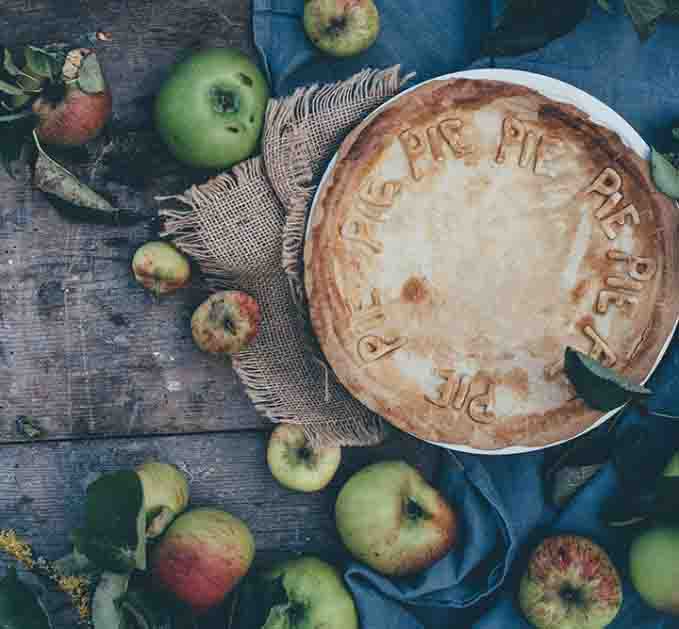





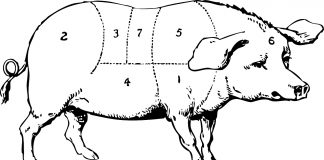





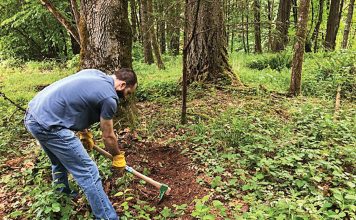
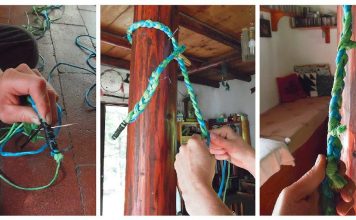
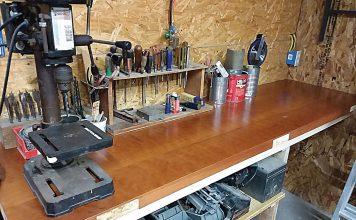
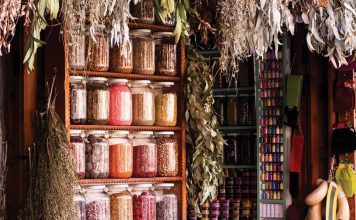
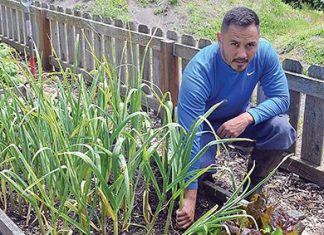
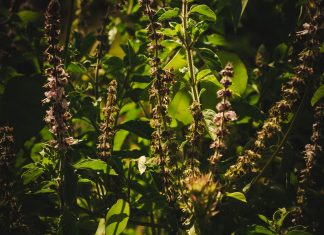
I’ve been baking for 40 years and have read thousands of recipes. You have a talent for clear, unambiguous explanation. Thanks for the share. Well done.